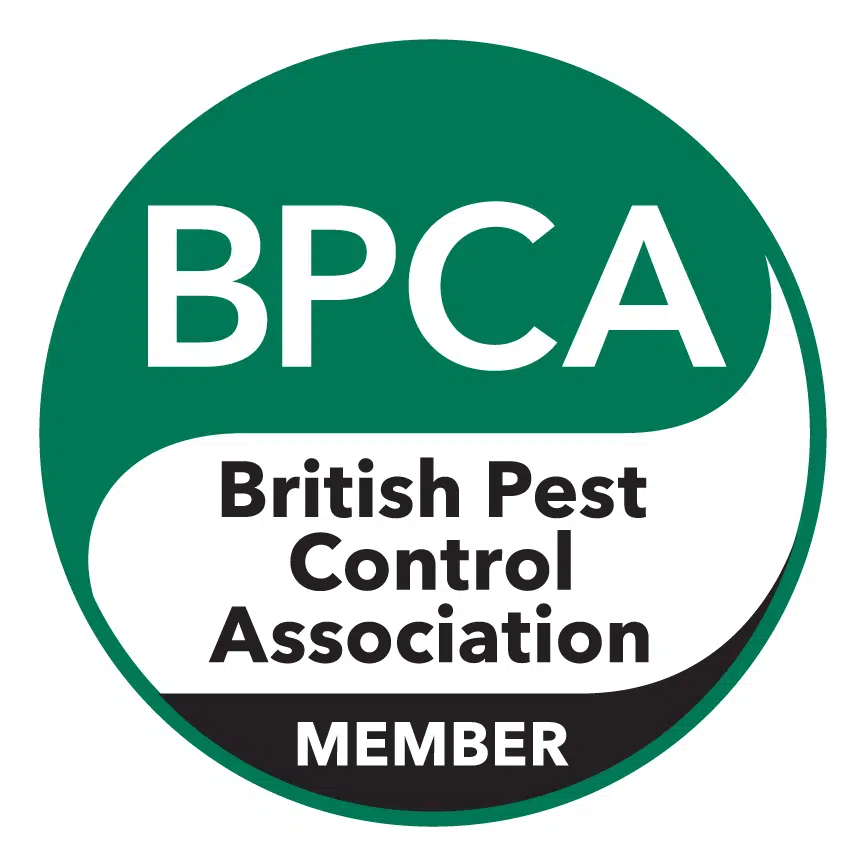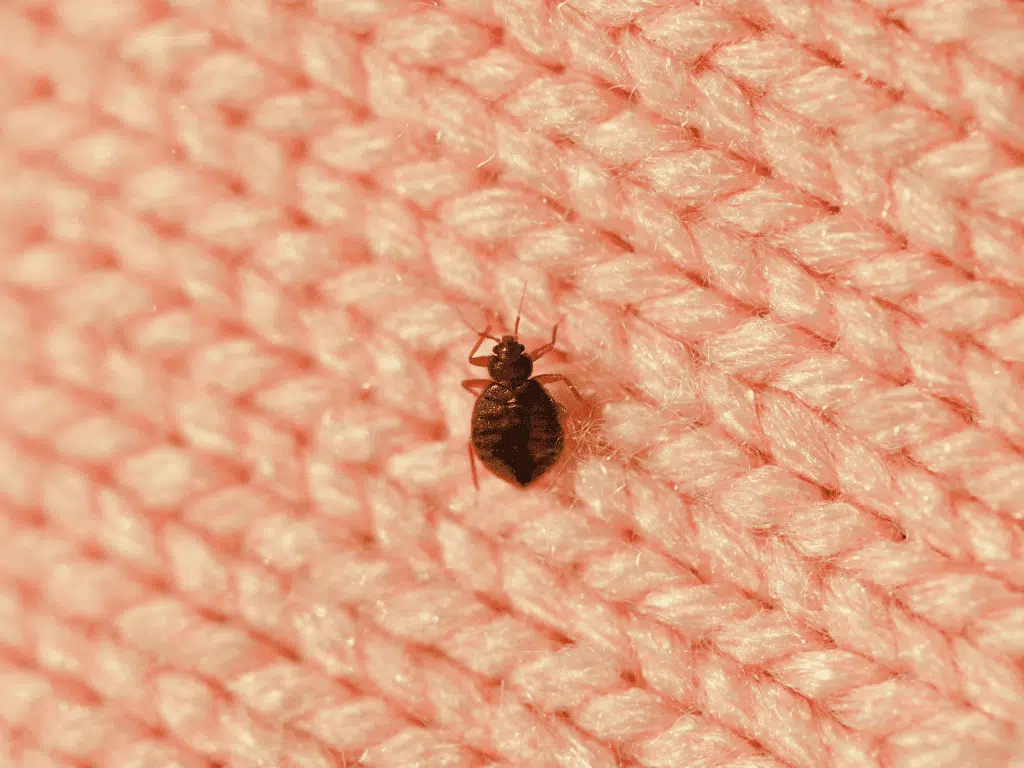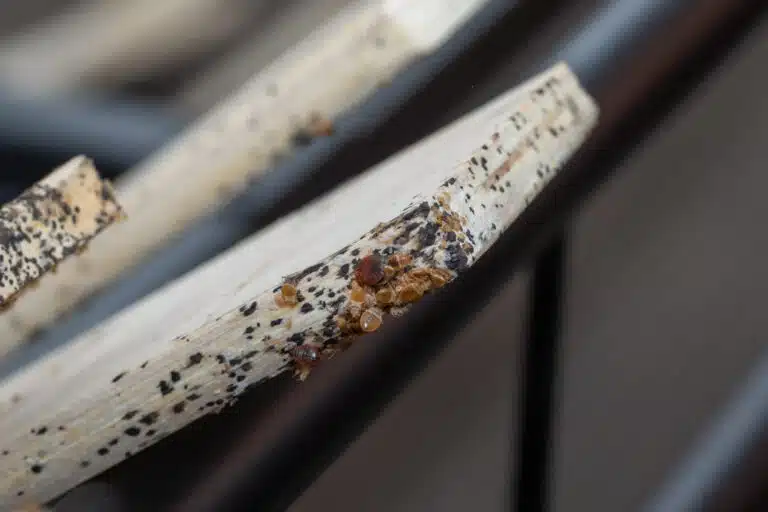Professional heat treatment is the only proven single-visit solution that eliminates bed bugs at every stage of life.



A bed bug infestation can be stressful, causing itchy bed bug bites, sleepless nights, and endless frustration. These tiny, nocturnal pests feed on human blood and are experts at hiding in mattresses, bed frames, and small cracks around your home or business. These little pests might even be in unexpected places like loose wallpaper, stuffed animals, and other soft toys.
If you’re wondering how to get rid of bed bugs, the first step is knowing what to look for. Common signs include bite marks, blood spots on your sheets, and even spotting live bed bugs.
When it comes to eliminating bed bugs heat treatment is the most effective method, but here are some treatments and important bed bug information to get you started.

Begin with a thorough visual inspection. Carefully examine your mattress, bedding, and furniture for telltale signs such as reddish-brown stains, dark faecal spots, shed skins, or live bed bugs hiding in crevices and seams. These indicators can help confirm the presence of an infestation. If you have any questions or concerns during your inspection, our team is always ready to provide expert advice and support.
Using passive monitors and sticky traps placed strategically near your bed or other suspected areas can assist in tracking bed bug activity. These devices help gauge the severity of the infestation and guide your decisions regarding appropriate treatment options.
Bed bugs are exceptionally skilled at hiding, often squeezing into the tiniest cracks, electrical outlets, loose wallpaper, and other hard-to-reach places. Because of their elusive nature, professional inspections are often recommended to ensure accurate detection and effective control of the infestation.

These pesky critters are small, oval-shaped insects with flat, reddish-brown bodies that measure approximately 5 to 7 millimetres in length. They are often mistaken for other household pests, but several distinctive signs can help confirm their presence. One of the most common indicators is the appearance of dark stains or spots on your sheets and bedding, which are actually bed bug faecal matter.
You may also notice shed skins, these are the exoskeletons that bed bugs leave behind as they grow and tiny white eggs tucked away in crevices, particularly around mattresses, bed frames, and joints of other furniture.
Adult bed bugs leave behind these telltale signs, along with dark yellowish stains on bedding and furniture caused by their bodily fluids. In more advanced or established infestations, bed bugs may also emit a distinctive musty or sweetish odour, although this scent is not always noticeable, especially in smaller infestations. Recognising these signs early is crucial for prompt action and effective bed bug control.
Preventing the spread of bed bugs is vital once an infestation is found. Seal cracks and crevices around your home to remove hiding spots and limit their movement. Avoid bringing in second-hand furniture without careful inspection, as these can carry bed bugs. When travelling, especially in hotels, use protective mattress covers and keep luggage on a suitcase stand or in a closed car. Regularly wash bedding and clothes on a hot wash and dry on a high heat to kill bed bugs and eggs. Keeping your home clean and clutter-free makes it harder for bed bugs to hide and breed, supporting your bed bug control efforts.
While trapping bed bugs can help monitor an infestation, it won’t get rid of bed bugs completely. However, it can slow their spread while you arrange for professional treatment.
One of the most effective methods is sealing your mattress and box spring in a plastic bag, which traps all the bugs inside, preventing them from escaping or feeding. Over time, this can help reduce their numbers, but it won’t eliminate them entirely. If you’re planning to buy a new mattress, you’ll need to ensure the infestation has been fully eradicated first to prevent re-infestation.
Placing sticky traps and bed bug interceptors under bed legs, furniture, and affected areas can capture bed bugs as they move. These traps help monitor infestation levels and confirm their presence, but they won’t eliminate bed bugs completely. A professional exterminator is necessary to fully remove them.
While these methods can help reduce an infestation, they will not completely eliminate bed bugs. For full eradication, professional bed bug treatment is required.
At ThermoPest, we recommend washing all bedding, clothing, and curtains on a hot wash cycle (60°C or above) to kill bed bugs and their eggs. Follow this by tumble drying on a hot setting for at least 30 minutes to ensure full eradication.
Once cleaned, store items in sealed plastic bags to prevent re-infestation. Alternatively, lightly infested items can be placed in a sealed bag and frozen for at least 3 to 4 days, although this method is slower and less reliable than heat treatment.
Vacuum regularly, targeting mattresses, bed frames, carpets, and skirting boards, focusing especially on cracks and crevices where bed bugs tend to hide. Always dispose of vacuum contents immediately outside your home in a sealed bag to avoid spreading the infestation.
While bed bugs are not attracted to dirt or unclean environments, regular cleaning and inspection remain essential in managing an infestation — but it’s important to understand that cleaning alone will not eliminate bed bugs. These pests are incredibly resilient and can survive deep within furniture, wall joints, and even electrical sockets, far beyond the reach of household cleaning or DIY sprays.
Cleaning helps in other ways, however. It reduces clutter, removes visible bugs and eggs, and makes professional heat treatment far more effective by allowing our technicians to target every hidden area. Think of cleaning as a vital preparation step — not a solution in itself.
In severe infestations, some items may be too heavily affected to salvage. Simply discarding them without precautions can make the situation worse by allowing bed bugs to spread to other areas or neighbouring properties.
However, at ThermoPest, our professional heat treatments are designed so that in most cases, you won’t need to throw anything away.
Our advanced heat systems penetrate deep into furniture, fabrics, and hard-to-reach spaces — safely killing bed bugs and their eggs in a single treatment. Only in rare, extreme cases — such as heavily infested mattresses or items with internal hollow spaces that can’t be safely heated — might disposal be necessary.
If that situation does arise, always seal the item in plastic before removal and clearly label it as “Infested – Do Not Reuse” to prevent further spread. But in most circumstances, our BPCA-trained ThermoPest technicians can save your furniture and belongings, restoring your home to a completely bed bug-free condition without unnecessary loss.
Even after removing infested items, bed bugs often remain hidden in other parts of your property, making professional pest control essential to completely eliminate all bed bugs and their eggs. ThermoPest’s BPCA-trained specialists employ advanced industrial heat systems that penetrate deeply into furniture, fabrics, and hard-to-reach areas, providing a thorough, chemical-free solution to bed bug infestations with guaranteed results.
For those experiencing bed bug bites, mild steroid cream or antihistamines can help relieve itching and painful swelling, particularly on white skin or black or brown skin where bites may appear as dark yellow or purple spots.
Taking these preparatory steps alongside professional bed bug treatment significantly increases the chances of fully removing bed bugs from your home or business.

For the most effective and reliable solution to bed bug infestations, professional heat treatment from our expert team is the best choice. Our advanced heat treatment penetrates deep into cracks, crevices, and furniture, eliminating bed bugs at all stages of life, including eggs, without the use of harmful chemicals. This safe, fast, and thorough method ensures complete eradication, giving you peace of mind and a bed bug-free home or business.
High temperatures get rid of bed bugs at all stages of life. Bed bugs and their eggs cannot survive when exposed to high heat, making this method a guaranteed solution.
Specialist equipment is used to raise the temperature in infested areas, allowing heat to penetrate deep into cracks, crevices, and tiny hiding spots where sprays and DIY treatments often fail. Unlike chemical treatments, this method doesn’t rely on pesticides, making it a safer option for homes and businesses. It’s also fast and efficient, usually completed in a single day with minimal disruption.
For the best results, heat treatment should always be carried out by trained professionals to ensure safe and thorough eradication.
Chemical treatments can help control bed bug infestations, but they are less effective than heat treatment since they only kill bugs on contact and don’t reach deep cracks and crevices where eggs and hidden bed bugs remain. Read our guide comparing heat and chemical treatments.
There are different types of pesticides and insecticides, including aerosols, dust, and residual sprays, which may require multiple applications for lasting results. When using bed bug spray, always follow Environmental Protection Agency (EPA) guidelines to ensure safe use.
Sprinkling food-grade diatomaceous earth around hiding places can also help by dehydrating and killing bed bugs, but it should be used carefully.
If you suspect a bed bug infestation, act fast—bed bugs can live up to 12 months and lay over 500 eggs, allowing them to multiply quickly. Professional bed bug treatment is the best way to ensure complete eradication, and our expert team is here to help.
Leading experts in bed bug control
Guaranteed quick and rapid responses to urgent infestations
For ongoing problems, use our preventative contracts
To successfully get rid of bed bugs, you must eliminate every life stage, from egg to adult. Professional heat treatment is the most effective method. Unlike chemical sprays, to which many London bed bug populations have developed genetic resistance, heat relies on “thermal death points.”
Chemicals may kill exposed bugs but rarely reach eggs or hidden clusters. Many UK bed bug populations are resistant to common insecticides. Read More.
Yes — in dense areas like London, infestations spread quickly between flats and shared housing. DIY efforts rarely work long term. Check our London page for more information.
Call us on 0808 189 2310 – or complete our quote form below.
Speak to a bed bug expert today!
Enter Your Details To Request A Call Back
Enter Your Details To Request A Call Back
Enter Your Details To Request A Call Back
Enter Your Details To Request A Call Back
Enter Your Details To Request A Call Back